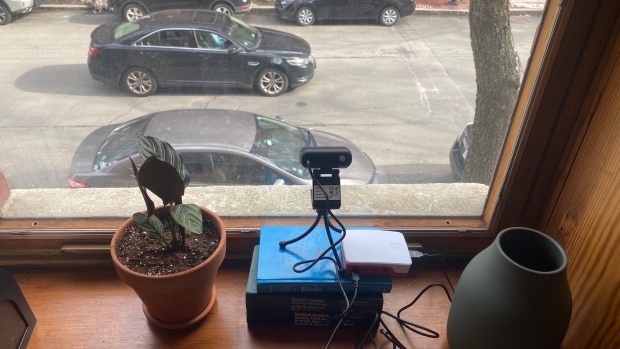
A North End resident caught hundreds of drivers breaking the speed limit with a homemade speed camera, but also found that the majority of Boston drivers drive at speeds under 20 mph, well under the city speed limit.
Adam Balsam set up a webcam with $35 programmable Raspberry Pi mini computer and an open-source Python program that infers the speeds of moving objects from the images captured on the camera.
He then let the setup run for a week and analyzed the results, which he posted on a Twitter thread earlier this week:
2/6
— Adam Balsam (@balsama) February 24, 2021
Visualization (X=time; Y=speed) pic.twitter.com/lWgKUFzI2l
“One thing that was interesting is that people tend to drive well below our speed limit,” Balsam told Streetsblog in a phone conversation about the project on Wednesday. “The mean, median, and mode speeds were all around 18 mph… A street of this scale conveys to people that this isn’t a place to go 30 to 35 mph.
With that said, Balsam found that reckless driving was distressingly frequent.
“On average, someone was going more than 40 – over 15 mph over the speed limit – about once every 90 minutes. This is on a street where there’s a senior housing building, a daycare, a grocery store all on this block, and an elementary school not far away.”
The footage he captured also revealed that the “public” parking in front of his apartment had essentially been privatized by a small number of motor vehicle owners.
“Four of seven parked cars went totally unused over the course of the week, (and) six of seven vehicles parked on day one were still there on day six,” he wrote on Twitter.
Balsam says that the speed camera rig was inexpensive and easy to set up.
The software, written by Claude Pageau, a retired Canadian IT analyst, requires some calibration, but includes tools to produce time-lapse videos of camera footage and charts of the results.
“It took me maybe a couple hours to set up – I think if someone has a little bit of experience with (programming in) Python, it’s pretty easy to try it out, thanks to all the work (Pageau) did.”
Visit github.com/pageauc/speed-camera to view the code and the technical requirements.






